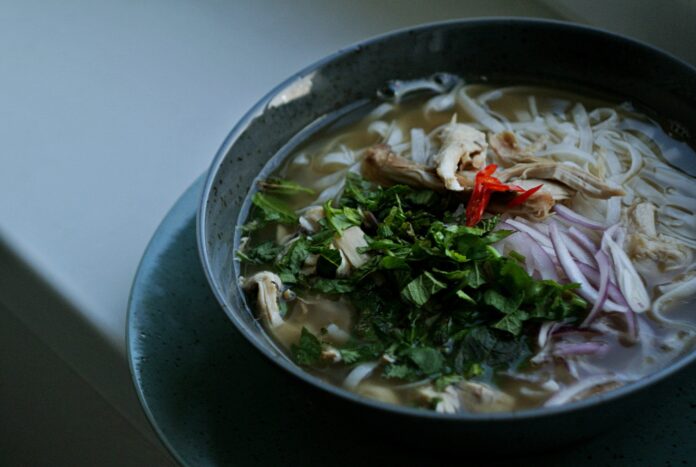Pho, the aromatic Vietnamese noodle soup that has taken the world by storm, is not just a culinary delight but also a nutritional powerhouse. But how did this iconic dish come into existence?
Pho traces its roots back to the early 20th century in northern Vietnam. It’s believed to have been influenced by French colonialism, incorporating elements of French cuisine into traditional Vietnamese cooking. The name “pho” likely evolved from “pot-au-feu,” a French beef stew.
Traditional pho consists of a flavorful broth made by simmering beef bones and aromatic spices like star anise and cloves for hours. This slow-cooking process extracts the rich flavors and nutrients, making it a wholesome choice. Thin rice noodles are added to the piping-hot broth, and the dish is typically served with thinly sliced beef or chicken and garnished with fresh herbs, bean sprouts, lime, and chili.
Pho’s popularity surged during the Vietnam War, with Vietnamese refugees introducing it to other countries. Today, it’s celebrated worldwide for its delicious taste and health benefits. It’s low in fat, packed with protein, and rich in vitamins and minerals.
The next time you savor a steaming bowl of pho, know that you’re not just indulging in a culinary masterpiece; you’re also partaking in a rich culinary history that’s as nourishing as it is delicious.






